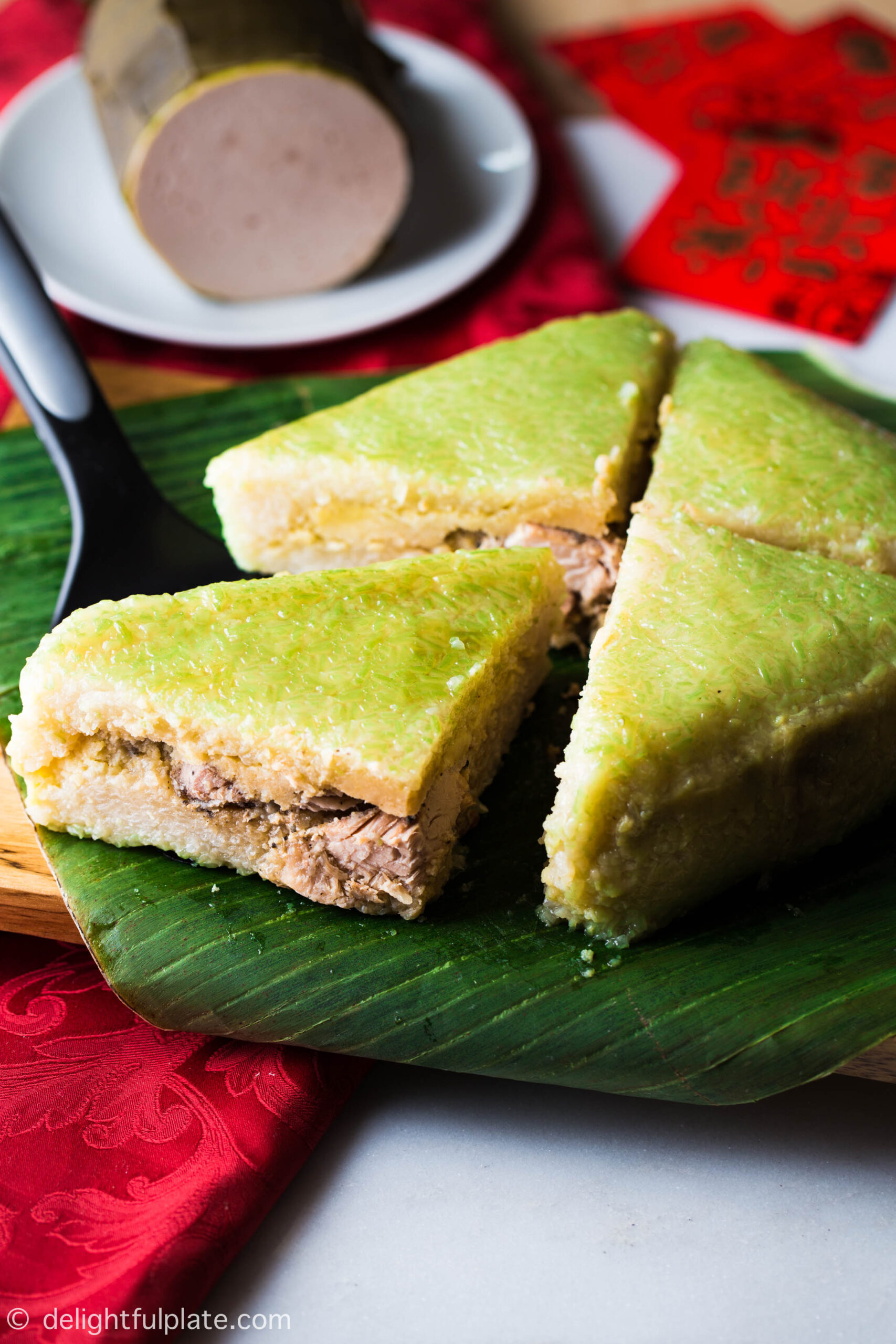Vietnamese desserts are a sweet journey through the country’s rich culinary traditions.
These treats blend unique flavors and textures, offering a delightful end to any meal.
From refreshing drinks to sticky rice cakes, there’s something for every taste bud.
You’ll find a mix of local ingredients like coconut, tropical fruits, and mung beans in many Vietnamese sweets.
Some desserts are served hot, while others are chilled for a cool treat.
Many have interesting stories behind them, tied to holidays or special occasions.
Get ready to explore 23 tasty Vietnamese desserts that showcase the country’s sweet side.
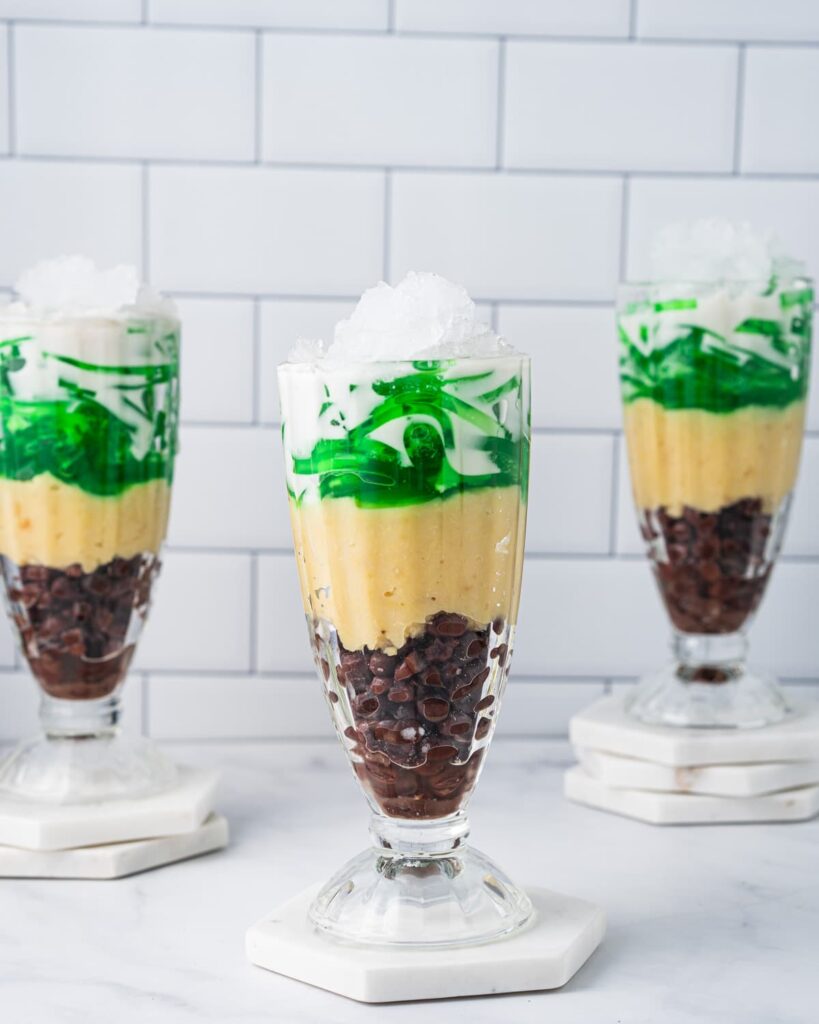
1. Che Bà Ba
Che Bà Ba is a sweet and creamy Vietnamese dessert soup. It’s made with coconut milk, taro, and sweet potato.
You’ll love the soft, chewy textures of the taro and sweet potato chunks.
The coconut milk adds a rich, tropical flavor.
This dessert is often served warm, but it can be enjoyed cold too.
It’s perfect for satisfying your sweet tooth after a meal.
You can find Che Bà Ba in many Vietnamese restaurants and street food stalls.
It’s a comforting treat that’s popular year-round.
Try Che Bà Ba for a taste of traditional Vietnamese sweets. Its unique blend of flavors and textures makes it a standout dessert.
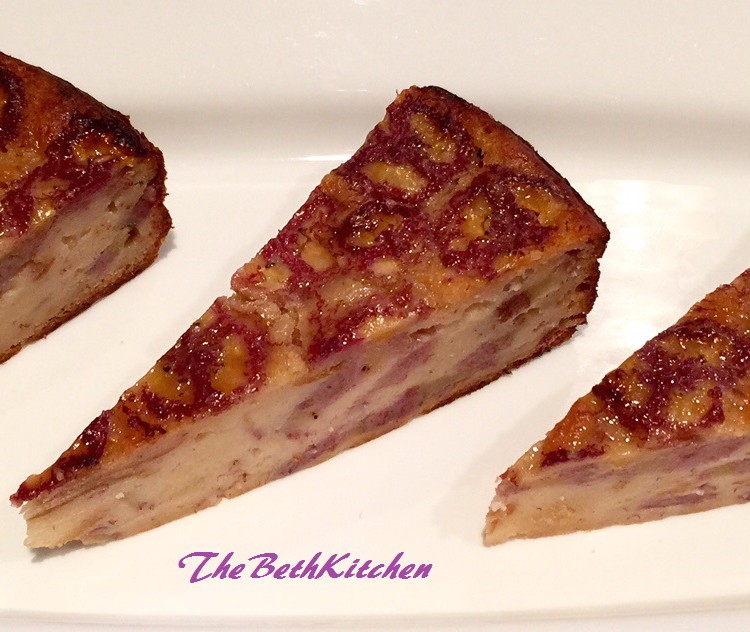
2. Bánh Chuối Nướng
Bánh Chuối Nướng is a beloved Vietnamese baked banana cake. You’ll love its comforting mix of ripe bananas and coconut milk.
To make this dessert, you slice ripe bananas and combine them with a sweet custard. The mixture is then baked until golden brown.
The cake has a soft, pudding-like texture. It’s often served warm, making it perfect for cooler evenings.
You can enjoy Bánh Chuối Nướng on its own or with a scoop of vanilla ice cream.
It’s a great way to use up overripe bananas and treat yourself to a taste of Vietnam.
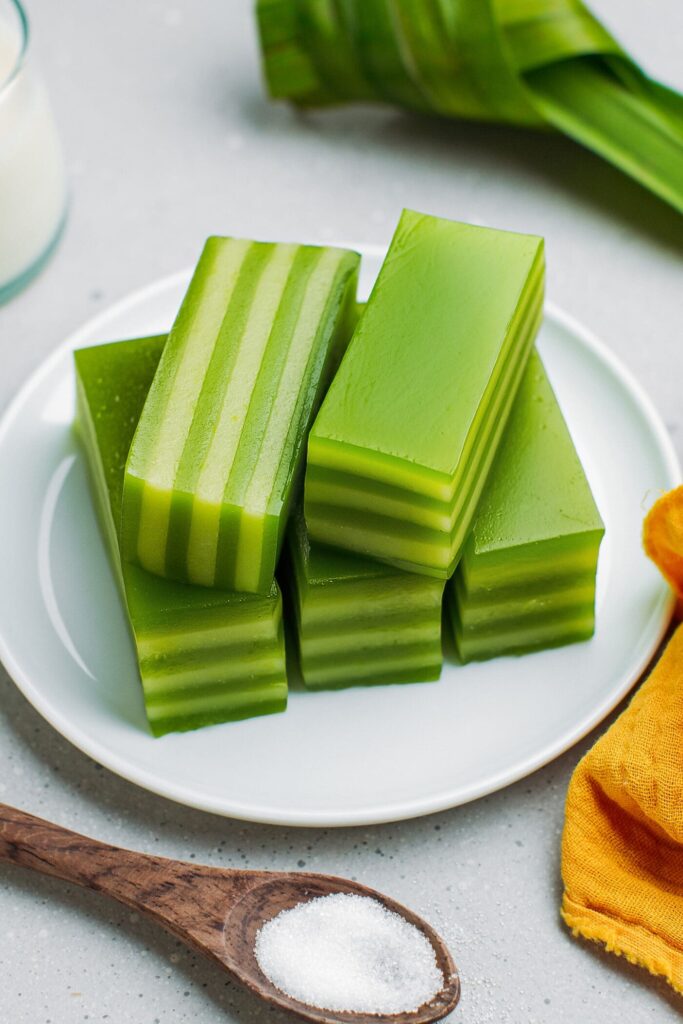
3. Bánh Da Lợn
Bánh Da Lợn is a colorful Vietnamese steamed layer cake. It’s made with rice flour, coconut milk, and sugar. The green layers get their color from pandan leaves, while the yellow layers come from mung beans.
You’ll love the chewy texture of this sweet treat. It’s similar to mochi and melts in your mouth. The name means “pig skin cake” because of its layers that resemble pig skin.
To make Bánh Da Lợn, you mix the batter and steam it in thin layers.
Each layer cooks for about 5 minutes before adding the next.
The result is a beautiful striped cake that’s perfect for special occasions.
This dessert became popular in the 1950s in northern Vietnam. It’s now a common treat during Lunar New Year celebrations.
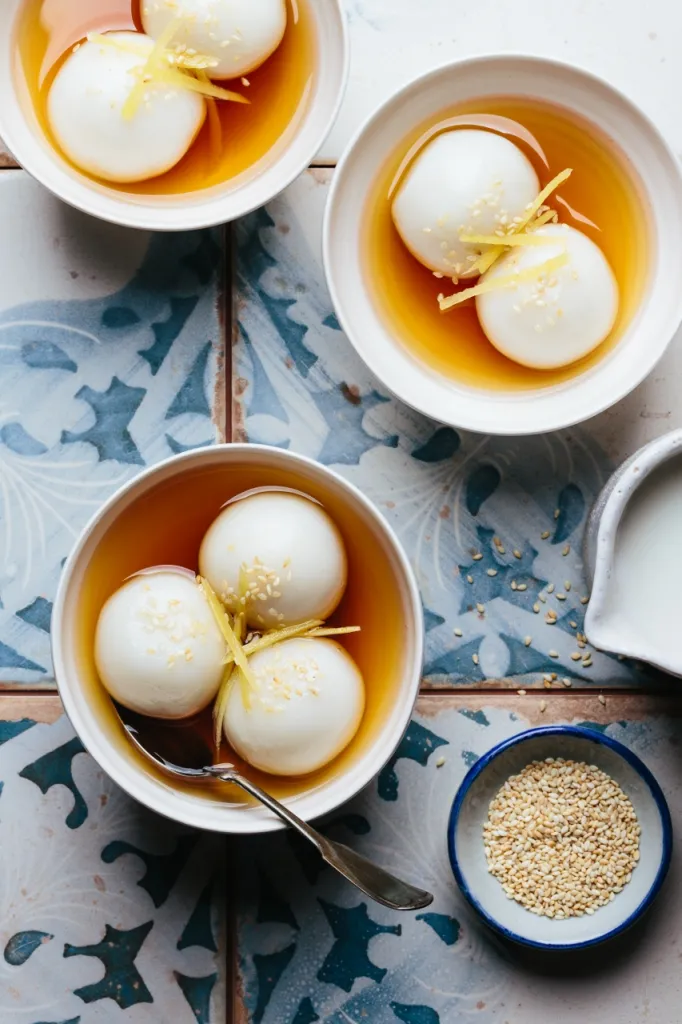
4. Chè Trôi Nước
Chè Trôi Nước is a popular Vietnamese dessert made with glutinous rice balls. These sweet treats are filled with mung bean paste and served in a warm ginger syrup.
To make Chè Trôi Nước, you’ll form small balls using glutinous rice flour and water. The filling is made from cooked mung beans sweetened with sugar.
Once prepared, you’ll cook the rice balls in boiling water until they float. Then, you’ll transfer them to a ginger syrup made with sugar and water.
To serve, you’ll place the rice balls and syrup in a bowl.
Top it with coconut cream and toasted sesame seeds for extra flavor and texture.
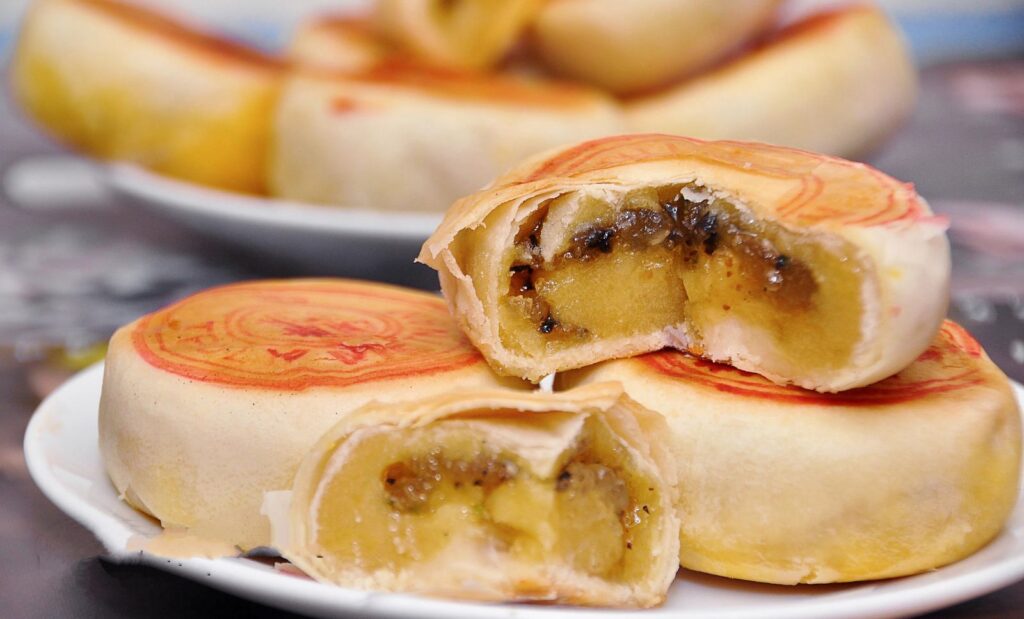
5. Bánh Pía
Bánh Pía is a tasty Vietnamese layered pastry cake. It has a flaky outer crust and a sweet filling made from mung beans.
You’ll often find durian or salted egg yolk mixed into the filling for extra flavor. The cake is usually round and about the size of your palm.
Bánh Pía is popular in southern Vietnam. You can buy it as a snack or dessert from street vendors and bakeries.
This treat is especially loved during the Mid-Autumn Festival. It makes a great gift for family and friends during this time of year.
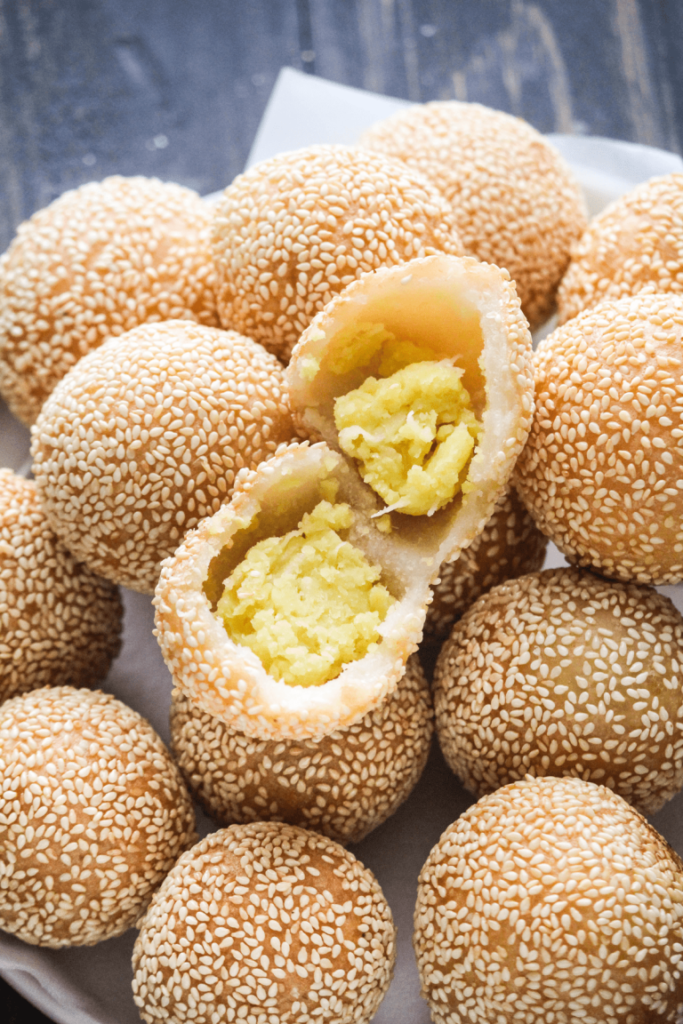
6. Bánh Cam
Bánh Cam is a popular Vietnamese dessert that will delight your taste buds. These fried sesame balls have a crispy exterior and a soft, chewy interior.
The outer shell is made from glutinous rice flour and coated with sesame seeds. Inside, you’ll find a sweet filling made from mung bean paste.
When you bite into a Bánh Cam, you’ll experience a satisfying crunch followed by the rich, sweet flavor of the filling.
These treats are often sold as street food in Vietnam.
You can enjoy Bánh Cam as a snack or dessert. They’re best served warm, fresh from frying. Give these delicious sesame balls a try for a taste of traditional Vietnamese sweets.
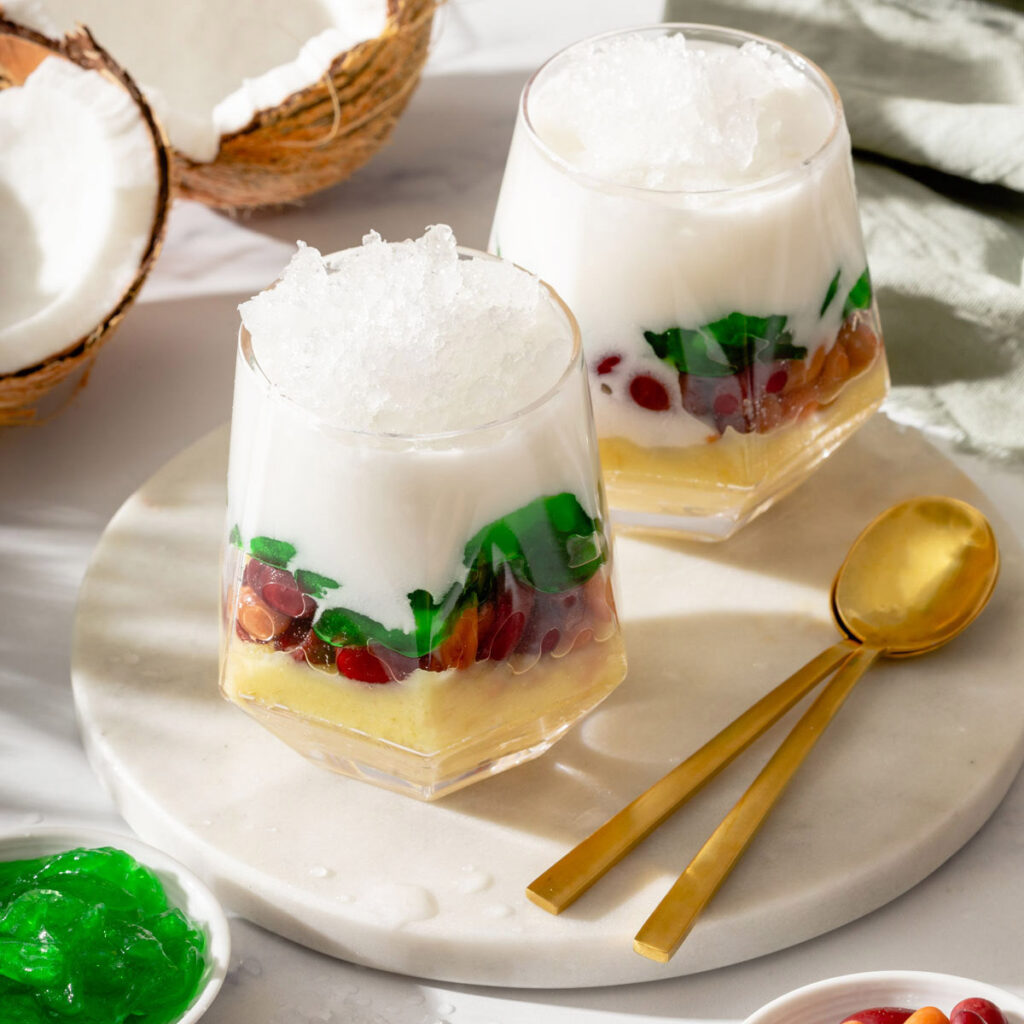
7. Chè Ba Màu
Chè Ba Màu is a tasty Vietnamese dessert that means “three color dessert” in English. It’s a cool treat perfect for hot days.
You’ll find layers of red beans, mung beans, and green pandan jelly in this dessert. A sweet coconut sauce ties it all together.
To make it, you cook the beans and make the jelly separately. Then you layer them in a glass with crushed ice.
The mix of textures and flavors makes Chè Ba Màu fun to eat. You get soft beans, chewy jelly, and creamy coconut milk in each bite.
You can find this dessert at Vietnamese restaurants or make it at home. It’s a great way to try something new and refreshing.
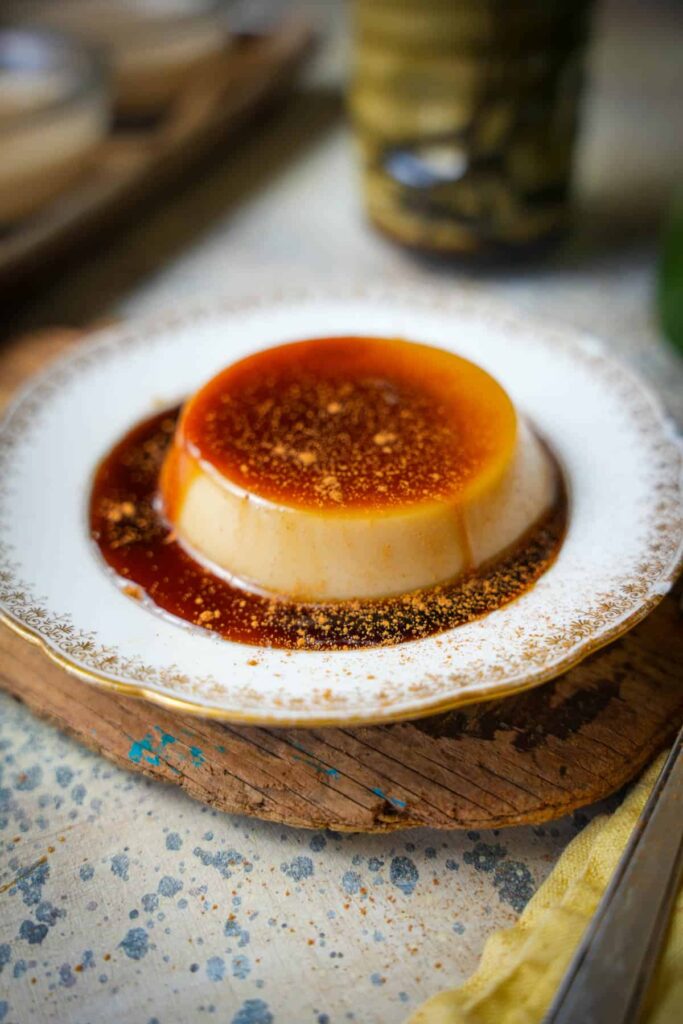
8. Bánh Flan
Bánh Flan is a beloved Vietnamese dessert inspired by French crème caramel. This silky smooth custard is topped with a layer of golden caramel sauce.
To make Bánh Flan, you’ll create a caramel and pour it into molds. Then, you’ll prepare a custard mixture with eggs, milk, sugar, and vanilla.
Pour the custard over the caramel in the molds. You can cook Bánh Flan by steaming or baking in a water bath. The dessert is done when a toothpick comes out clean.
After cooling, refrigerate Bánh Flan overnight to set.
When ready to serve, flip the mold onto a plate. The caramel will cascade down the sides of the creamy custard.
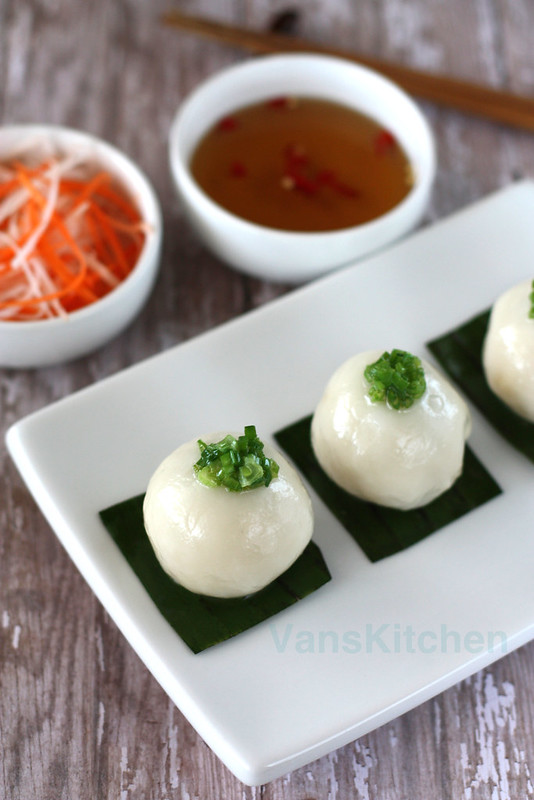
9. Bánh Ít Trần
Bánh Ít Trần is a traditional Vietnamese dessert you’ll love. These small, chewy dumplings are made from rice flour and filled with mung bean paste.
The dumplings are boiled until they float to the surface, then served in a sweet ginger syrup. You’ll notice their sticky texture and subtle sweetness.
Bánh Ít Trần is often eaten as a snack or light dessert.
You can find it at street food stalls and markets across Vietnam. Try this unique treat for a taste of authentic Vietnamese cuisine.
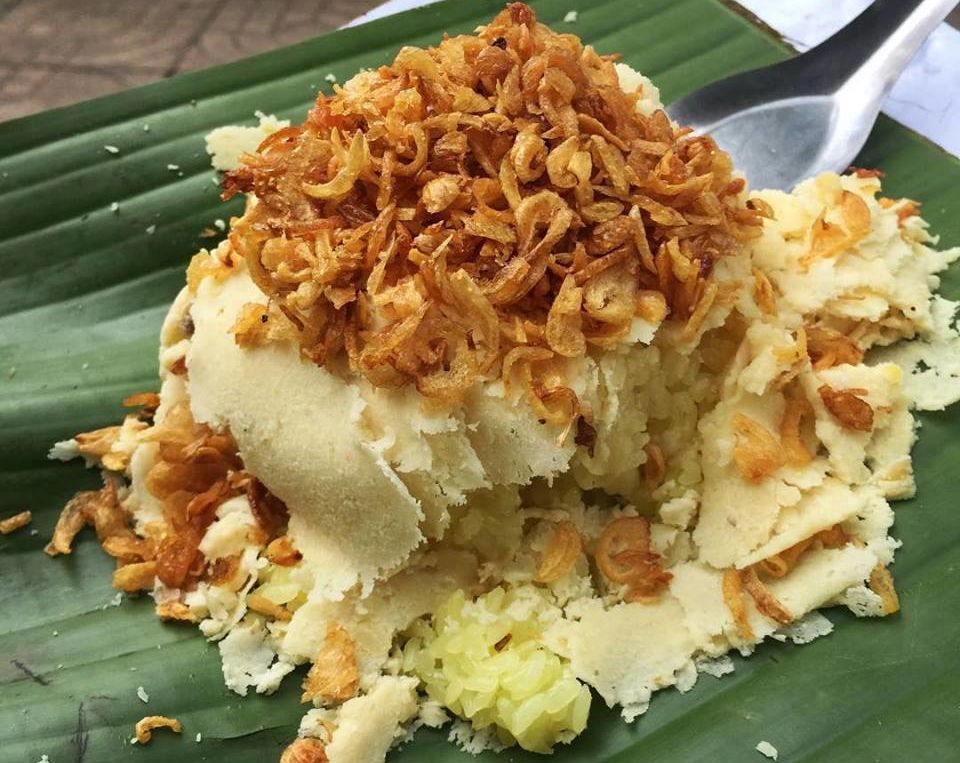
10. Xôi Xéo
Xôi Xéo is a tasty Vietnamese sticky rice dish. It’s often eaten as a dessert or snack.
The rice is cooked with turmeric, giving it a bright yellow color. It’s topped with mung bean paste and crispy fried shallots.
You’ll find Xôi Xéo sold by street vendors and in markets across Vietnam. It’s usually wrapped in banana leaves for easy eating on the go.
This dish offers a mix of textures and flavors.
The soft, sticky rice contrasts nicely with the crunchy shallots. The mung bean adds a creamy element.
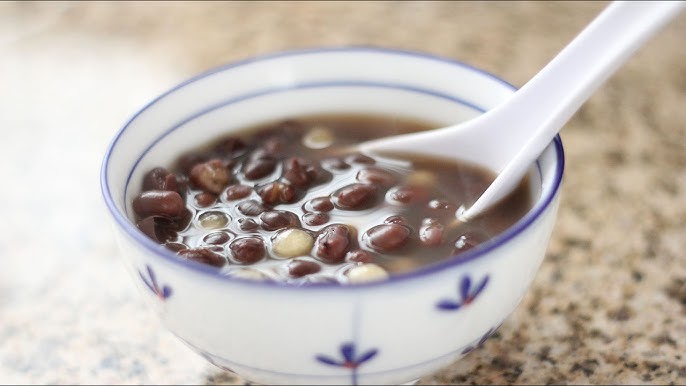
11. Chè Đậu Đỏ
Chè Đậu Đỏ is a sweet and comforting Vietnamese dessert made with red beans. This tasty treat combines soft, cooked red beans with a sweet syrup.
To make Chè Đậu Đỏ, you soak red beans overnight, then cook them until tender. You mix the beans with sugar and water to create a sweet syrup.
Some versions add coconut milk for extra richness.
You can enjoy this dessert hot or cold, depending on your preference.
It’s often served in a bowl or glass, sometimes with a scoop of ice cream on top.
Chè Đậu Đỏ is a popular choice for those who like simple, traditional Vietnamese sweets. You’ll find it in many Vietnamese restaurants and street food stalls.
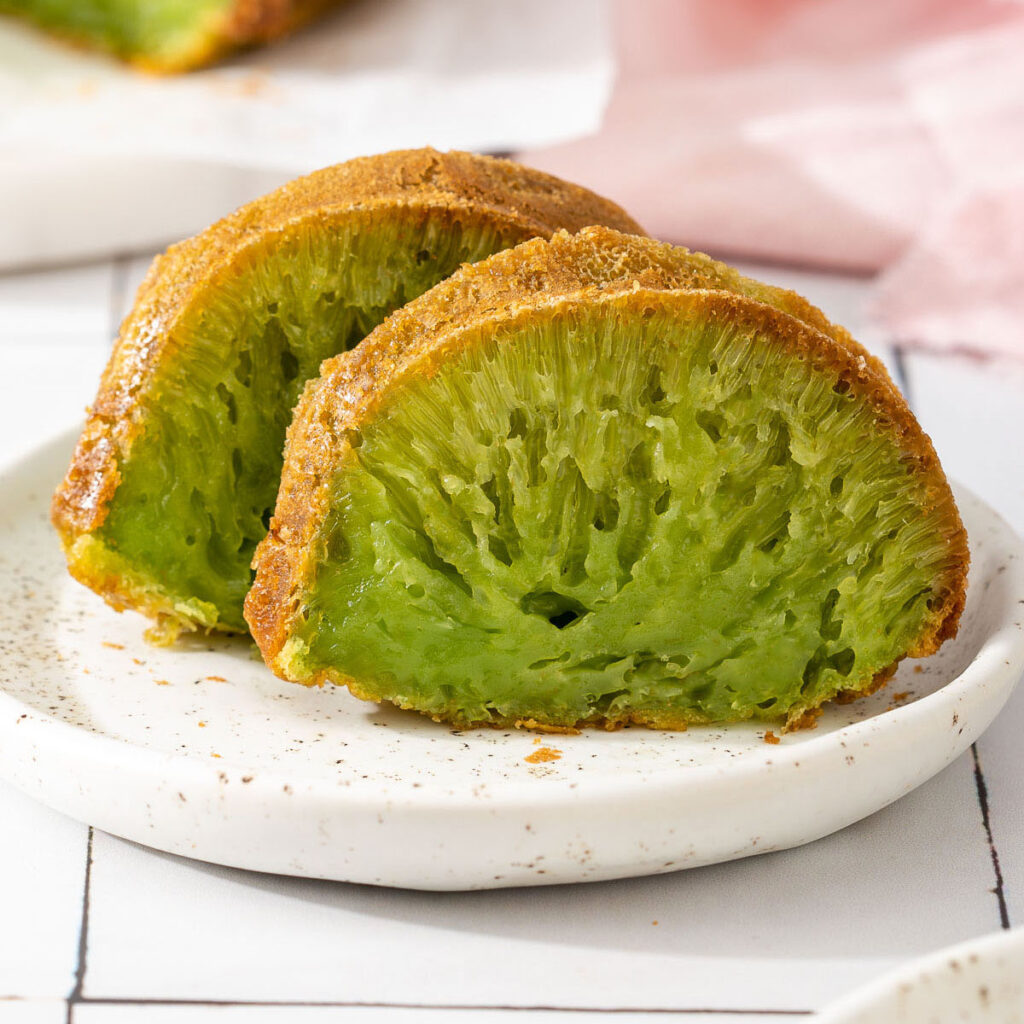
12. Bánh Bò
Bánh Bò is a popular Vietnamese sponge cake. It comes in two main varieties: steamed and baked. The steamed version is white, while the baked one often has a green hue from pandan leaves.
You’ll love the light, fluffy texture of Bánh Bò. It’s made with rice flour, coconut milk, and sugar. The baked version is known for its distinctive honeycomb pattern inside.
When you bite into Bánh Bò, you’ll taste a sweet, coconutty flavor. The pandan-flavored type adds a unique aroma and taste.
This cake is perfect for breakfast or as a snack with tea or coffee.
You can find Bánh Bò at Vietnamese bakeries or try making it at home. It’s a tasty treat that showcases the diversity of Vietnamese desserts.
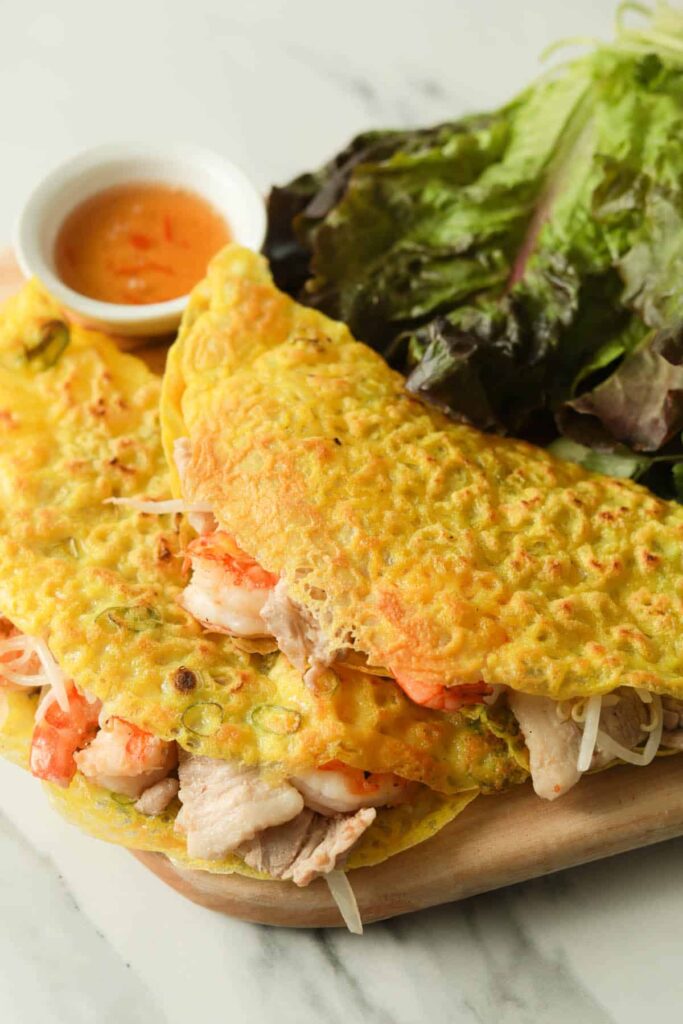
13. Bánh Xèo
Bánh Xèo is a savory Vietnamese crepe that’s crispy and flavorful. You’ll find it filled with pork, shrimp, and bean sprouts. The batter is made from rice flour, turmeric, and coconut milk.
To make Bánh Xèo, pour the batter into a hot pan. Add your fillings and cook until crispy. You don’t need to flip it. The crepe should be golden and crunchy on the outside.
Serve Bánh Xèo with fresh herbs and lettuce.
You can wrap pieces in rice paper for a delicious bite. Dip it in nuoc mam sauce for extra flavor.
It’s a fun, hands-on dish that’s perfect for sharing.
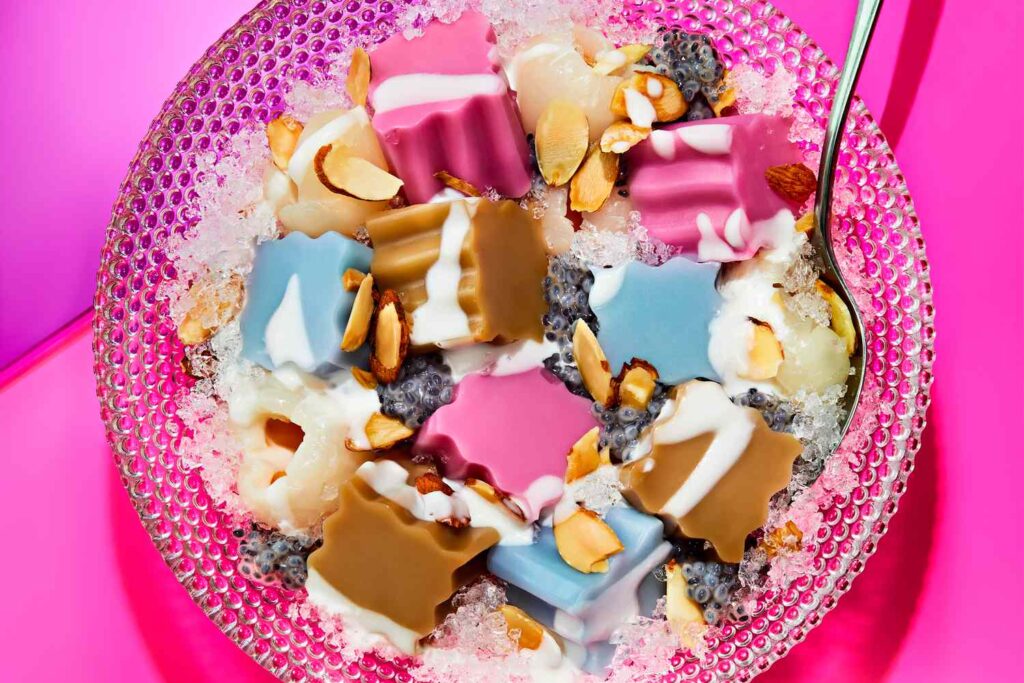
14. Chè Khúc Bạch
Chè Khúc Bạch is a refreshing Vietnamese dessert that you’ll love on a hot day. It features soft, silky cubes of almond jelly floating in a sweet coconut milk base.
You’ll find a mix of textures in this treat. The jelly is smooth and jiggly, while fruits like lychee or longan add a nice contrast. Some versions include chewy tapioca pearls too.
The dessert gets its name from its white color. “Khúc” means piece, and “Bạch” means white in Vietnamese.
You can enjoy it cold or at room temperature.
This dessert originated in Hanoi but is now popular throughout Vietnam. You can easily find it at street stalls or make it at home with a few simple ingredients.
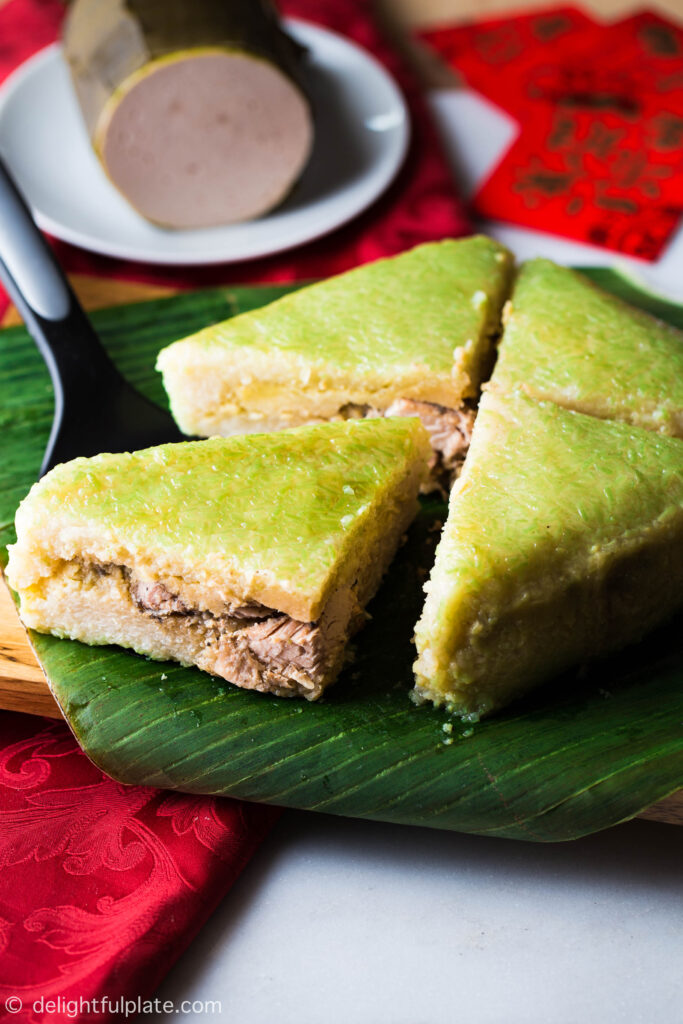
15. Bánh Chưng
Bánh Chưng is a traditional Vietnamese sticky rice cake enjoyed during Lunar New Year celebrations. This square-shaped treat is made with glutinous rice, mung beans, and pork belly.
To make Bánh Chưng, you start by layering sticky rice, mung beans, and pork in a mold lined with banana leaves. The filling is carefully arranged, with rice forming the base and top layers.
You then wrap the cake tightly in banana leaves and tie it securely. The package is boiled for several hours until fully cooked.
When unwrapped, Bánh Chưng reveals a dense, flavorful interior with distinct layers.
This savory cake is often served sliced and pan-fried, giving it a crispy exterior. Its rich taste and cultural significance make it a beloved part of Vietnamese cuisine.
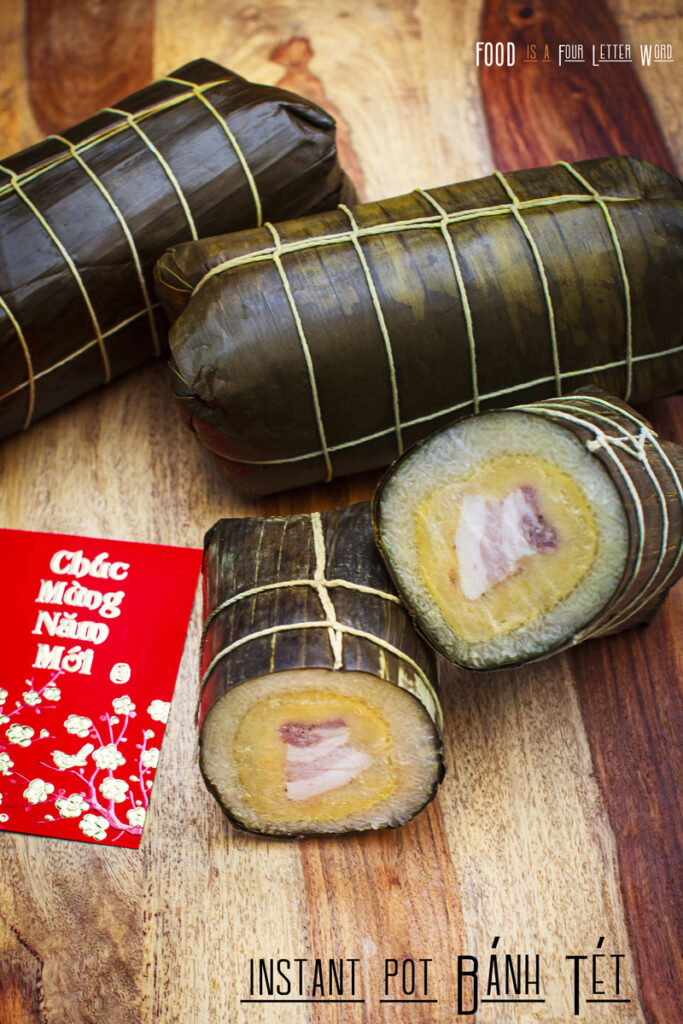
16. Bánh Tét
Bánh tét is a special Vietnamese sticky rice cake enjoyed during Tet celebrations. You’ll find these cylindrical treats wrapped in banana leaves, giving them a unique shape and flavor.
Inside, you’ll discover layers of goodness. Sticky rice forms the outer layer, often tinted green with pandan leaves. The filling typically includes savory pork belly and sweet mung beans.
Making bánh tét takes time and patience. You need to soak the rice, prepare the fillings, and wrap everything carefully. Then comes the long cooking process, usually boiling for several hours.
When ready to eat, you slice the bánh tét into rounds.
You can enjoy it warm or at room temperature.
It’s a tasty blend of textures and flavors that captures the spirit of Vietnamese New Year.
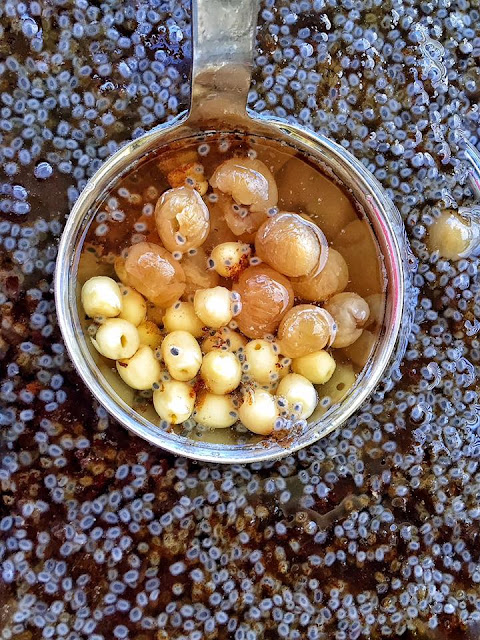
17. Chè Sen
Chè Sen is a sweet Vietnamese dessert made with lotus seeds. You’ll find these small, round seeds floating in a clear, sweet syrup. The lotus seeds have a subtle floral taste and a soft, chewy texture.
To make Chè Sen, the lotus seeds are boiled until tender. They’re then mixed with sugar syrup and sometimes coconut milk.
The dessert is often served chilled, making it refreshing on hot days.
You can enjoy Chè Sen on its own or as part of a larger dessert platter.
It’s a light, delicate treat that showcases the unique flavor of lotus seeds. Try this traditional Vietnamese dessert for a taste of something different.
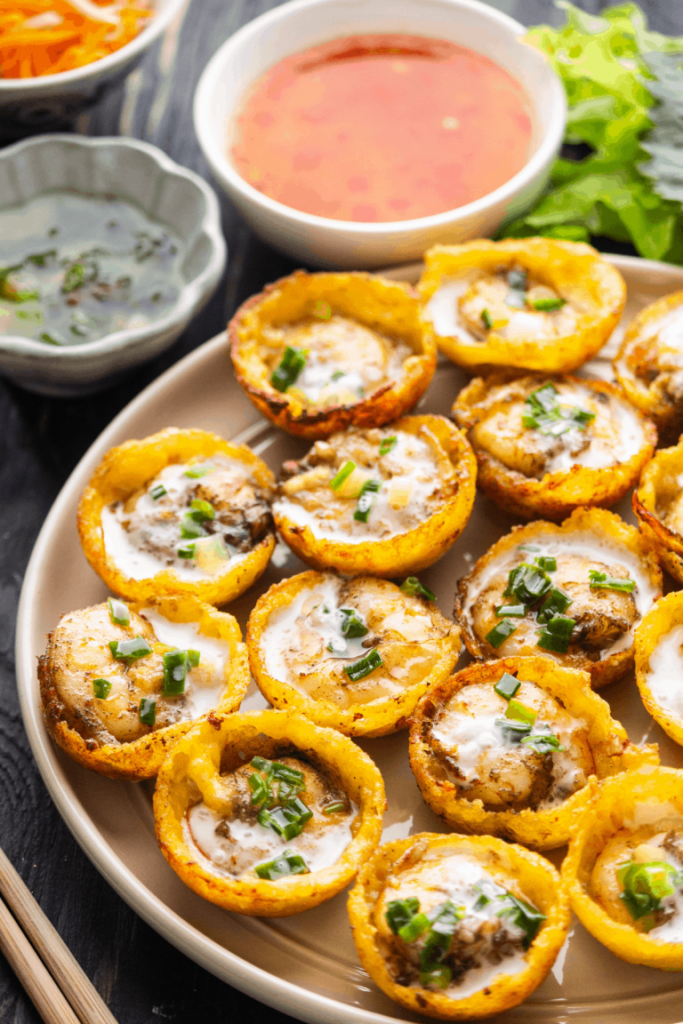
18. Bánh Khọt
Bánh Khọt is a tasty Vietnamese mini pancake that you’ll love. These small, savory treats are crispy on the outside and soft on the inside.
You’ll find them made with rice flour, coconut milk, and turmeric. The batter is poured into special round molds and cooked until golden.
Each pancake is typically topped with shrimp and green onions.
You can enjoy them wrapped in lettuce and herbs, dipped in fish sauce.
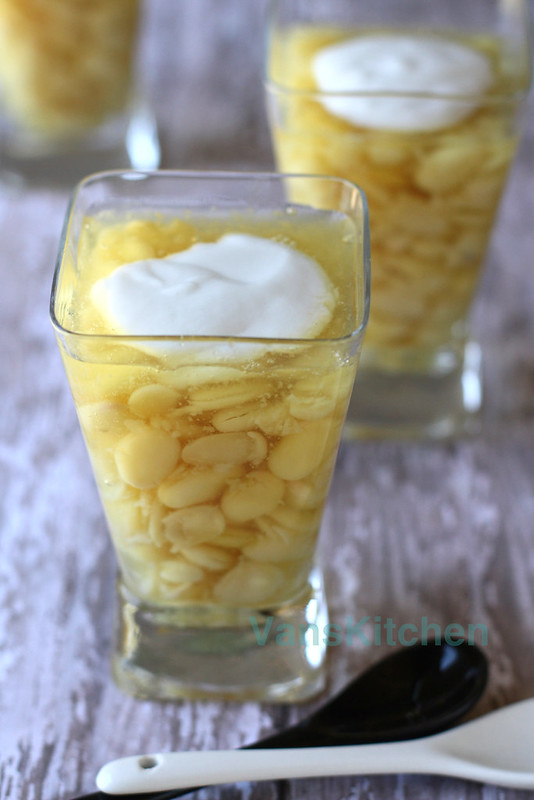
19. Chè Dừa Dầm
Chè Dừa Dầm is a refreshing Vietnamese coconut dessert. You’ll love its mix of textures and flavors.
This treat features young coconut meat and jelly in a sweet coconut milk base. The coconut jelly adds a fun, bouncy texture.
To make it, you’ll layer crushed ice, coconut meat, and jelly in a tall glass. Then pour coconut milk and sugar syrup over the top.
Some versions include extras like pandan jelly or mung bean paste. These add color and more taste to the dessert.
Chè Dừa Dầm is perfect for hot days. You can find it at Vietnamese dessert shops or try making it at home.
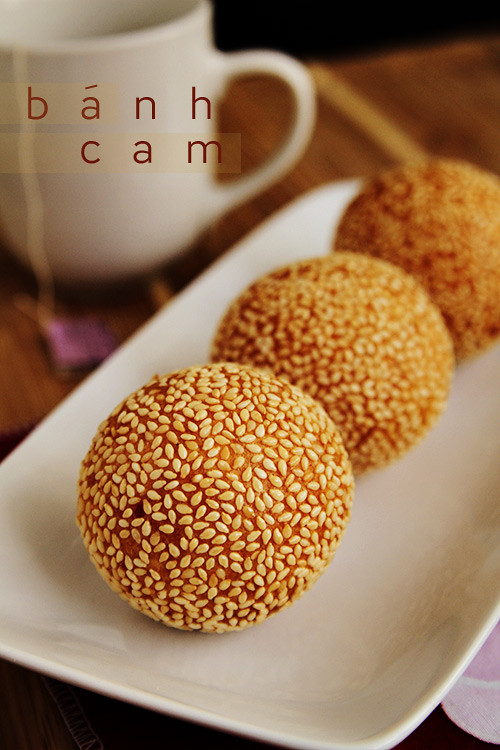
20. Bánh Rán
Bánh Rán is a popular Vietnamese fried dessert. It’s a sweet treat that you’ll often find at street food stalls and markets.
These golden balls are crispy on the outside and chewy on the inside. They’re made with glutinous rice flour and coated in sesame seeds.
The filling is usually sweet mung bean paste. Some versions use other fillings like taro or red bean.
To eat Bánh Rán, you can enjoy it warm or at room temperature. It pairs well with tea or coffee for a tasty snack or dessert.
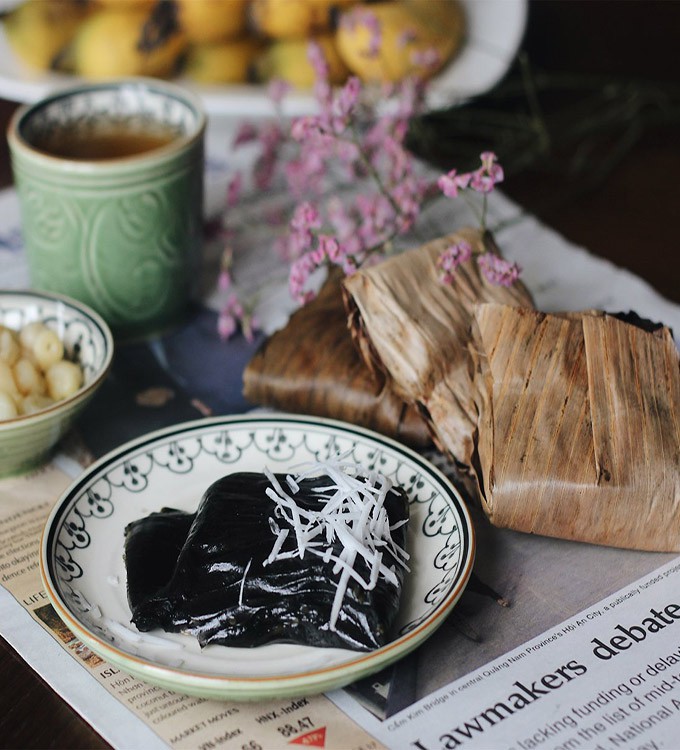
21. Bánh Gai
Bánh gai is a unique Vietnamese dessert from the Red River Delta region. This dark-colored cake has a distinctive look and taste.
The dough is made with rice flour and thorn leaf paste or powder. Thorn leaf, also called gai or ramie, comes from the nettle family.
Inside, you’ll find a sweet filling. It usually contains mung beans, shredded coconut, sesame seeds, and lotus seeds. Sugar, pork fat, and other flavorings are often added too.
You’ll love the chewy texture and earthy flavor of bánh gai. It’s a tasty treat that shows off Vietnam’s diverse dessert traditions.
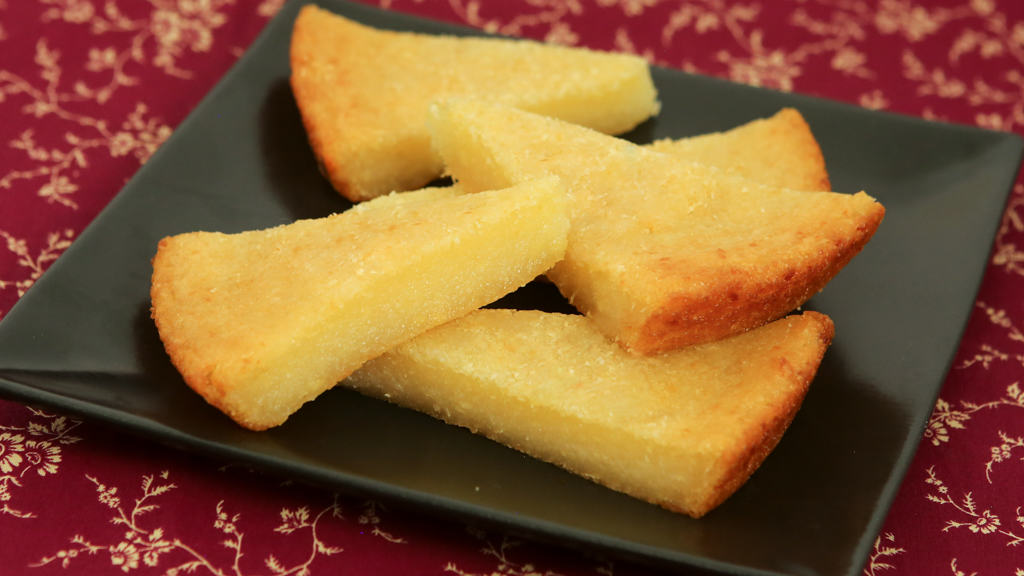
22. Bánh Khoai
Bánh Khoai is a tasty Vietnamese dessert made with cassava. This sweet treat has a chewy texture and a rich flavor.
To make Bánh Khoai, you mix grated cassava with coconut milk, sugar, and sometimes mung beans. The batter is then baked until golden brown.
You can enjoy this cake warm or at room temperature. It’s often cut into small squares, making it perfect for snacking or serving at gatherings.
Bánh Khoai is popular during Vietnamese holidays and special occasions. You’ll find it in many bakeries and markets throughout Vietnam.

23. Chè Thái
Chè Thái is a tasty Vietnamese fruit cocktail dessert. You’ll love its mix of tropical fruits, jellies, and coconut milk.
To make it, you combine fruits like lychee, longan, and jackfruit in a container. You can also add water chestnuts dyed red for a pop of color.
Next, you mix coconut milk with coconut juice and sweeten it with syrup. Some recipes include mung bean paste or pandan jelly for extra flavor.
When serving, you layer the fruits, jellies, and sweetened coconut milk in a tall glass with crushed ice. It’s a cool, refreshing treat perfect for hot days.
Ingredients Commonly Used in Vietnamese Desserts
Vietnamese desserts use unique ingredients that give them their distinct flavors and textures. Two key components stand out for their versatility and importance in many sweet treats.
Coconut Milk and Its Uses
Coconut milk is a staple in Vietnamese desserts. It adds richness and a tropical flavor to many treats.
You’ll find it in puddings, jellies, and sweet soups called “che.” Coconut milk gives desserts a creamy texture without dairy.
It pairs well with fruits like mango and banana. In some recipes, it’s used as a sauce or topping.
Try coconut milk in dishes like sweet corn pudding or three-color dessert (che ba mau). Its natural sweetness means less sugar is needed in recipes.
The Role of Tapioca and Rice Flour
Tapioca and rice flour are vital for the texture of many Vietnamese sweets. These ingredients create the chewy, bouncy feel in popular desserts.
Tapioca pearls are used in bubble tea and sweet soups. They soak up flavors and add a fun, chewy element. Rice flour makes soft, sticky doughs for treats like mochi and rice balls.
You’ll see these flours in desserts like banh bong lan (sponge cake) and che troi nuoc (rice balls in ginger syrup). They help create light, airy textures or dense, chewy ones depending on the recipe.
Cultural Significance of Vietnamese Desserts
Vietnamese desserts play a big role in the country’s culture. They bring people together and show off Vietnam’s history. These sweet treats are part of daily life and special events.
Traditional Desserts in Vietnamese Festivals
During Tet, Vietnam’s New Year, families make bánh chưng. It’s a sticky rice cake with pork and mung beans. The square shape stands for the earth.
People also eat candied fruits called mứt Tết. These sweets bring good luck for the year ahead. At the Mid-Autumn Festival, kids love bánh trung thu.
These are moon cakes with nuts, seeds, and sweet fillings. Families share them while looking at the full moon. For weddings, couples serve chè.
It’s a sweet soup that comes in many flavors. Guests enjoy it as a sign of a sweet life together.
Desserts as Everyday Treats
You’ll find sweet snacks all over Vietnam’s streets.
Chè ba màu is a popular choice. It has three colorful layers in a glass. Each layer has a different taste and texture.
Bánh chuối is another common treat.
It’s made from bananas and often sold by street vendors. You can get it steamed or fried.
In hot weather, you might try sinh tố.
It’s a thick smoothie made with fresh fruit. Mango and avocado are top picks. These drinks cool you down and give you energy.
